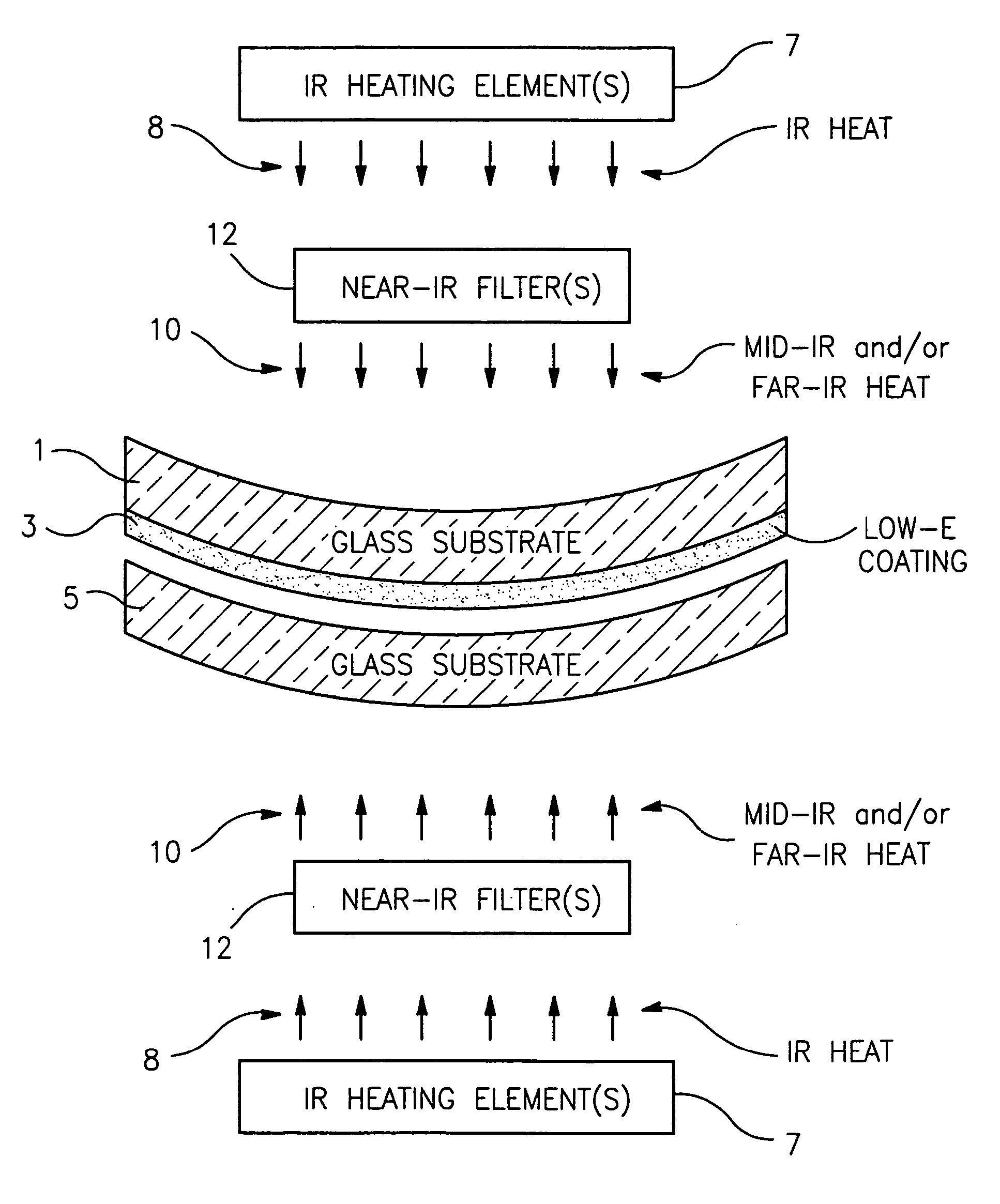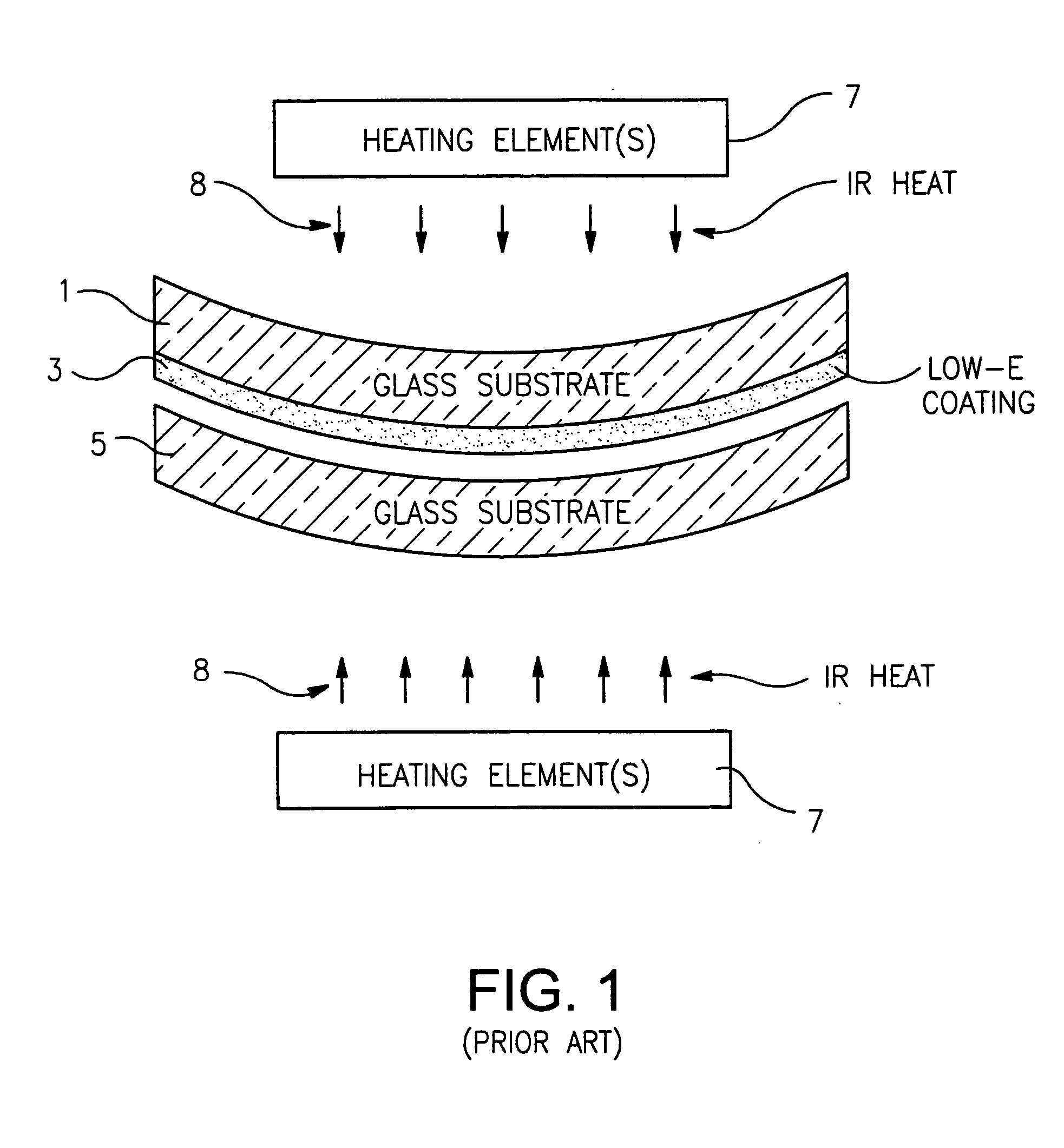Apparatus and method for bending and/or tempering glass
a technology which is applied in the field of apparatus and tempering glass, can solve the problems of coating b>3/b> to heat up, certain solar control coatings cannot on a regular basis withstand the bending process(es) sometimes used, and significantly more near-ir radiation being emitted, so as to reduce the amount of near-ir radiation, reduce the time at and/or peak temperature, and reduce the effect of underlying bending
- Summary
- Abstract
- Description
- Claims
- Application Information
AI Technical Summary
Benefits of technology
Problems solved by technology
Method used
Image
Examples
Embodiment Construction
[0037] Referring now more particularly to the accompanying drawings in which like reference numerals refer to like parts throughout the several views.
[0038]FIG. 4 is a schematic diagram of an apparatus and method for bending and / or tempering glass substrates / sheets according to an example embodiment of this invention. Glass sheets or substrates bent and / or tempered herein may be used in applications such as vehicle windshields, other types of laminated or monolithic windows, IG window units, or any other suitable application.
[0039] Referring to FIG. 4, first and second approximately flat glass substrates 1 and 5 are provided. First glass substrate 1 may have a multi-layer solar control coating 3 thereon (e.g., a low-E coating including at least one IR reflecting layer of a material such as Ag, NiCr, Au or the like). Second glass substrate 5 may or may not be coated in a similar manner. Coating 3 is provided on the side of substrate 1 closest to the other substrate 5 in order to ha...
PUM
| Property | Measurement | Unit |
|---|---|---|
| wavelengths | aaaaa | aaaaa |
| wavelengths | aaaaa | aaaaa |
| wavelengths | aaaaa | aaaaa |
Abstract
Description
Claims
Application Information
 Login to View More
Login to View More - R&D
- Intellectual Property
- Life Sciences
- Materials
- Tech Scout
- Unparalleled Data Quality
- Higher Quality Content
- 60% Fewer Hallucinations
Browse by: Latest US Patents, China's latest patents, Technical Efficacy Thesaurus, Application Domain, Technology Topic, Popular Technical Reports.
© 2025 PatSnap. All rights reserved.Legal|Privacy policy|Modern Slavery Act Transparency Statement|Sitemap|About US| Contact US: help@patsnap.com



